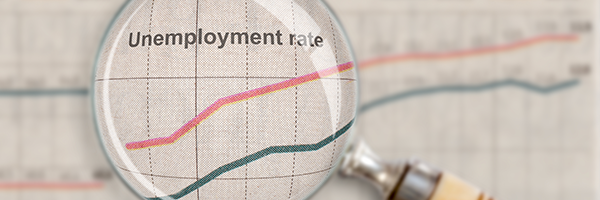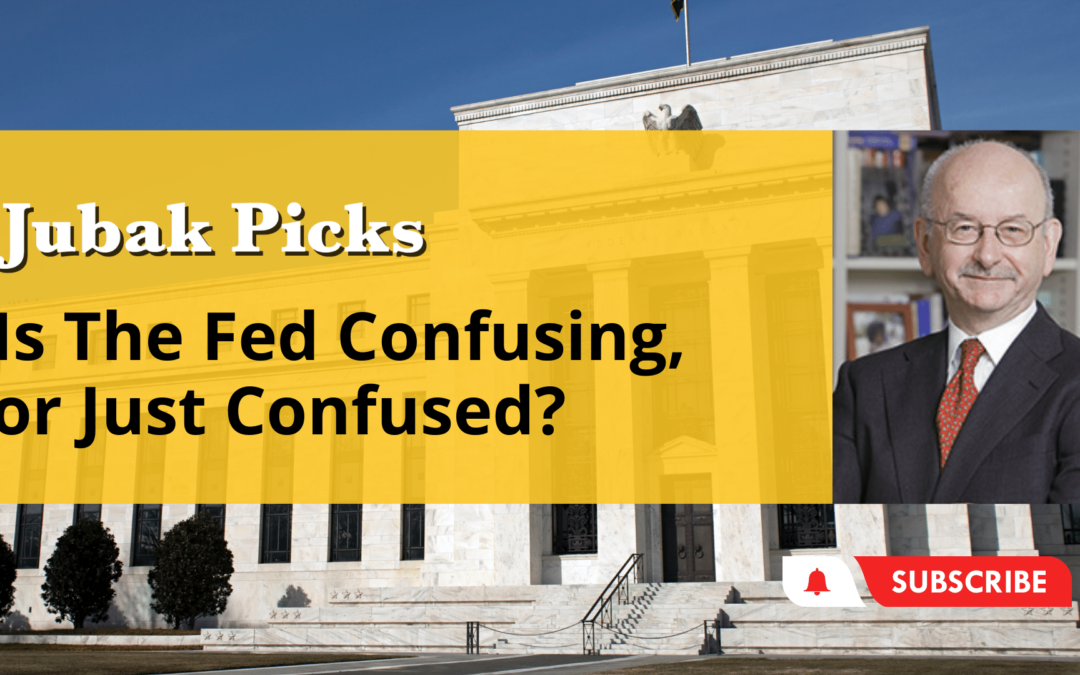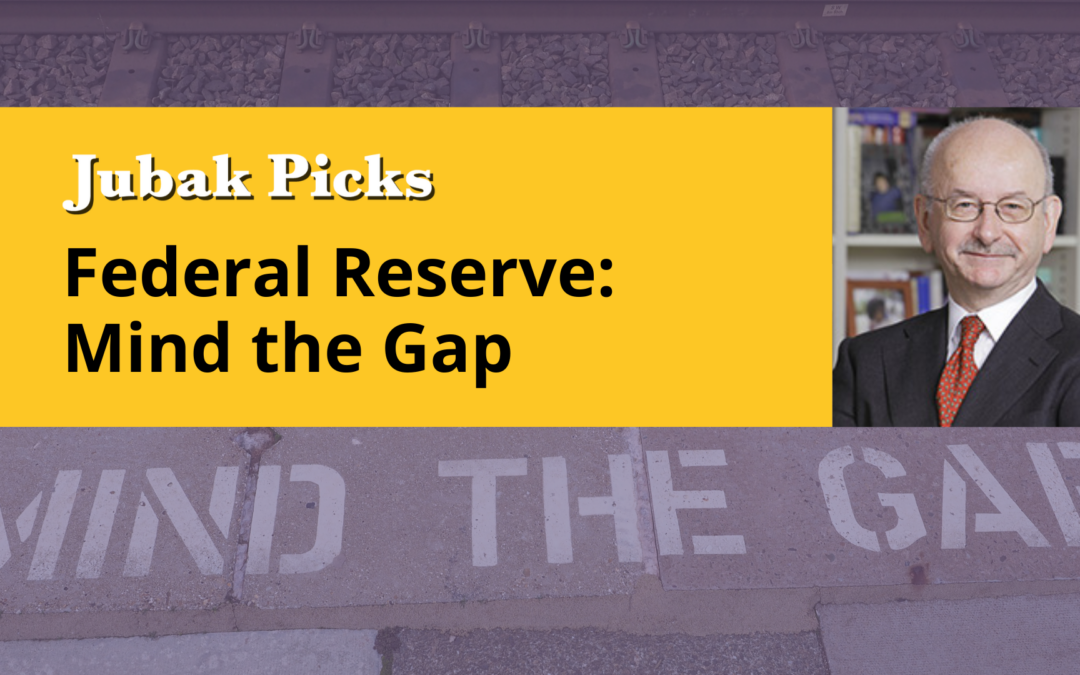
December 14, 2022 | Daily JAM |
Today I posted my two-hundred-and-seventeenth YouTube video: Where Do We Go From Here?
Today’s topic: Where Do We Go From Here? We got better-than-expected CPI inflation numbers yesterday. Economists were expecting a 7.3% headline annual rate and we got 7.1%. For the core rate, expectations were at 6.1% and we got 6.0%. In the hour following the CPI report, the S&P 500 jumped about 1.6%. If the Fed announces the expected 50 basis point rate hike and doesn’t shock the market with unexpected bad news, we’ll likely see a traditional Santa Claus rally. The question of the Fed’s Dot Plot projections remains my long-term concern–as we try to understand how long the Fed will continue to raise rates and when we are likely to hit the Fed’s goal of a 2% inflation rate. We’re currently at about 7% and I expect getting down to 5% or so will be pretty painless. Beyond that, How we go from 4-5% to 2%? could be the crucial question for 2023. Until that 2% is in view for the Fed, I don’t think the central bank will back off completely. We’ll see if this Santa Claus rally can stay convincingly above 4,000 in the S&P 500. If we do move above that level, I think we can expect the rally to continue until about February or maybe even early March. And then we’re likely to see a drop in stocks because of a lower growth rate for corporate earnings and continued inflation fighting from the Fed.

December 13, 2022 | Daily JAM, Morning Briefing |
Today the Bureau of Labor Statistics reported that headline CPI inflation in November climbed at a 7.1% annual rate. Month-to-month inflation rose by just 0.1% from October. Core inflation, that is inflation without energy or food prices, rose at a 6.0% annual rate with a 0.2% increase in November from October. Both the headline and core inflation numbers were better than economists had projected before this morning’s data release. Economists surveyed by Bloomberg had projected that headline Cpi inflation would climb by a 7.3% annual rate and 0.3% month over month. Core inflation was projected to move higher by 0.3%. The news certainly shows inflation on the decline. And that was good news for stocks ahead of tomorrow’s meeting of the Federal Reserve’s interest rate-setting body the Open Market Committee.

December 12, 2022 | Daily JAM, Morning Briefing |
Tomorrow, Tuesday, December 13, the Bureau of Labor Statistics will report November CPI inflation. Economists surveyed by Bloomberg estimate headline CPI to increase by 0.3% for the second consecutive month, with year-over-year CPI falling from 7.7% to 7.3%. Core CPI inflation, which excludes food and energy prices, is projected to climb at a 0.3% monthly rate or 6.1% year over year. (I would note that economists have underestimated the inflation rate in five of the last seven months.) Yes, inflation is slowing and it looks like we have seen a peak in the inflation rate. But, and it’s a big BUT, inflation is falling at a very slow rate.

December 2, 2022 | Daily JAM, Morning Briefing |
Nonfarm payrolls increased by 263,000 in November, the Labor Department said today. (And the October jobs total was revised upward to a gain of 284,000.) The unemployment rate held steady at 3.7%. Average hourly wages rose 0.6% in November from October. That was the biggest increase since January. Wages are now up 5.1% year-over-year. Economists surveyed by Bloomberg were looking for the economy to add 200,000 jobs in November and an unemployment rate of 3.7%. All of this shows a labor market that remains in top gear when the Federal Reserve has been looking for weakness in the jobs data as a sign that higher interest rates are slowing the economy enough to reach the Fed’s inflation rate goal.

December 1, 2022 | Daily JAM, Morning Briefing |
Inflation progress in October but painfully slow. PCE–personal consumption expenditure–in inflation, the Federal Reserve’s preferred inflation index, rose at a 6% rate year over year rate through October. That was down from a 6.3% rate in September. The core PCE index, which strips out food and energy costs, rose at a 5% rate, roughly where it’s been for most of 2022.

November 30, 2022 | Daily JAM, Morning Briefing |
In a speech today Federal Reserve Chair Jerome Powell clearly confirmed what other Fed officials have said this week: 1. The Fed will raise interest rates at its December 14 meeting by 50 basis points and not 75. That would follow on four straight 75 basis point interest rate increases. 2. The Fed will moderate the pace of its interest rate increases going forward. 3. The peak for the Fed’s benchmark interest rate will be “somewhat higher” than estimated in September. The Fed’s estimate in September was for a peak of 4.6% in 2023. The current benchmark rate is 3.75% to 4.00%. The Fed Funds futures market sees rates peaking at about 5% in the second quarter of 2023. What he didn’t clarify is what that peak rate might be or when the financial markets might see it.

November 28, 2022 | Daily JAM, Videos |
Today I posted my two-hundred-and-ninth YouTube video: Is the Fed Confusing or Just Confused? Today’s topic: Is The Fed Confusing, or Just Confused? First, Mary Daly, president of the San Francisco Fed came out with a very mixed message about the Fed’s December 14 meeting. The market seems to have decided that the Fed will raise rates by just 50 basis points, she said, but that it’s still too early to decide and a 75 basis-points increase is still on the table. But, she then added, the Fed is worried about overcorrecting and causing a recession. Then, Loretta Mester, president of the Cleveland Fed, announced that she is open to slowing the rate of the rate hikes, but was unclear on what “slowing” would actually mean. I think the key to market direction after the December meeting is the Dot Plot Summary of Economic Projections. The last time the Fed released a Dot Plot was September and it’s already wildly out of date. The September projected inflation rate for 2023 was 2.6-3.5% and 5.3-5.7% for 2022. Both projections will likely be revised higher in December. Inflation isn’t coming down as fast as the Fed thought in September, but it is coming down. Big question for the financial markets, though: Is it coming down enough? Rate hikes of 50 or 75 basis points are on the table but does the Fed now think it can stop raising the rates? My conclusion is that the Fed sounds confusing because the Fed is actually confused.

November 18, 2022 | AMZN, Daily JAM, Top 50 Stocks |
Not all price increases are equally sticky.
Some jumps in cost are likely to get countered quickly because the goods or services in question exist in highly competitive marketplaces. And competitors are likely to cut prices to gain market share as soon as that’s feasible.
Other prices are sticky and unlikely to get rolled back quickly if at all. Much of this stickiness results from markets that act as oligopolies where companies don’t compete on price but instead follow the lead of their competitors in pricing higher and higher. The stickiness of inflation matters a great deal right now because it’s a big factor for the Federal Reserve in figuring out how many interest rate increases will be necessary to tame inflation. The stickier inflation is the higher the Fed will have to raise interest rates. From this perspective, the recent round of price increases from package shipping companies–from pretty much all of them–is bad news indeed for the Fed and inflation.

November 11, 2022 | Daily JAM, Morning Briefing |
After Thursday’s CPI inflation report, stocks have a clear path to move higher in a strong rally through the end of the year. Critically, the October inflation report, which showed inflation falling slightly more than expected, gives Wall Street the data it needs to sustain its favorite rally story: Inflation has peaked and is heading down. Which means the Federal Reserve will soon pause its policy of increasing interest rates early in 2023 and pivot to cutting interest rates by the middle of the year. You could see that story at work in the huge jump in Treasury prices and the huge drop in yields. The yield on the 10-year Treasury fell 23 basis points to just 3.86% on Thursday That’s a huge move–and deeply significant–considering that the yield on the 10-yer bond was above 4%, at 4.21% on Monday, November 7.

November 6, 2022 | Daily JAM |
Expect another big macroeconomic report to hang over stocks, depressing volatility. After all, who wants to get out ahead of Thursday’s Consumer Price Index inflation report for October?

November 2, 2022 | Daily JAM, Morning Briefing |
At first investors and traders thought they heard the Federal Reserve signal that the central bank was thinking about a pivot to a policy of cutting interest rates. And stocks rallied. But then Fed chair Jerome Powell “clarified” the Fed’s thinking in his post-meeting press conference. It would be “premature,” Powell said, to think about pausing the Fed’s policy of increasing interest rates to fight inflation. The Fed, he added still had a “ways to go” and the “Ultimate level of interest rate will be higher than previously expected.” Powell stressed that the Fed’s goal continues to be a reduction in inflation and that the Fed is surprised at how sticky prices are and that inflation hasn’t given up more ground to the Fed’s six interest rate increases in 2022.

November 2, 2022 | Daily JAM, Morning Briefing, Videos |
Today is Ground Hog Day for the Federal Reserve. The U.S. central bank will announce whether or not it sees its shadow. It’s predicted to announce a 75 basis point increase in interest rates. However, there’s no revision of projections on interest rates, inflation updates, or GDP growth assessments scheduled for this meeting. Which leaves Wall Street free to speculate until the Fed’s December 14 meeting with those Dot Plot projections. During this “gap” in Fed guidance, investors are speculating on a pivot from the Fed’s policy of raising interest rates to either a pause or an outright reversal that moves to cut rates. This speculation, along with seasonal trends, has led to a rally that is now feeding itself as portfolio managers try to take advantage of this end-of-the-year bounce. However, I believe that the idea the Fed will pivot soon is incorrect and we’ll see another leg of the bear market starting around January. Because of this, I’d suggest not putting any new money in the market and instead waiting for upcoming lows as the Bear Market continues through 2023 to a bottom sometime that year or in 2024. And do remember that we get jobs numbers for October on Friday.












